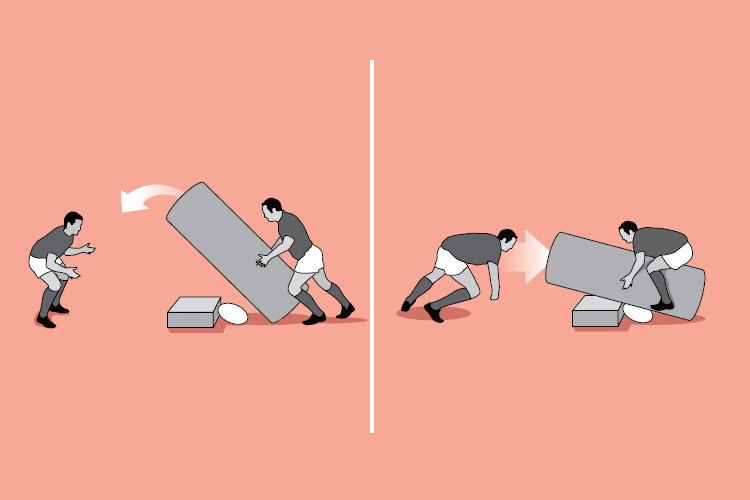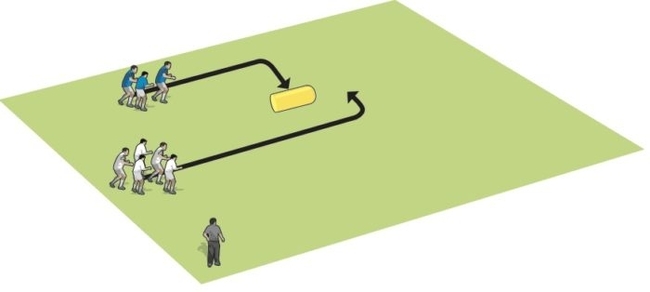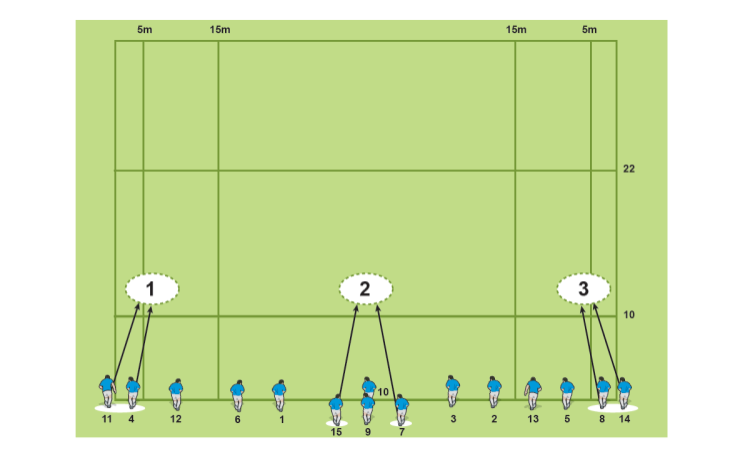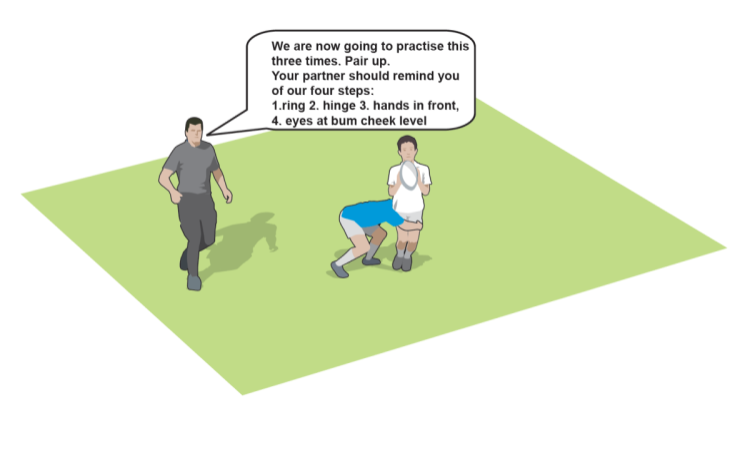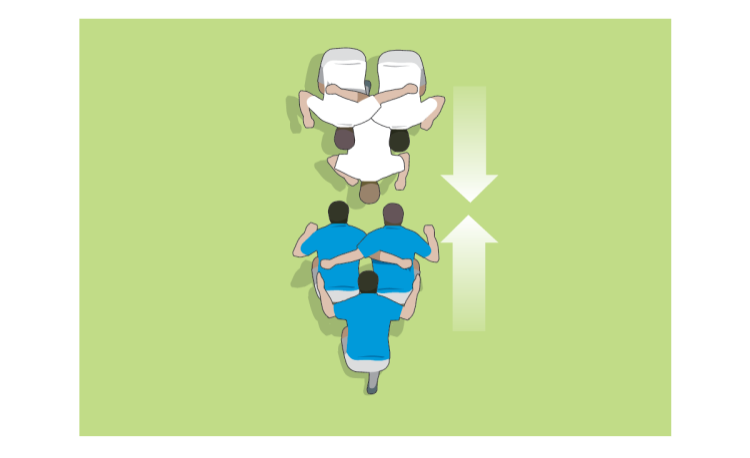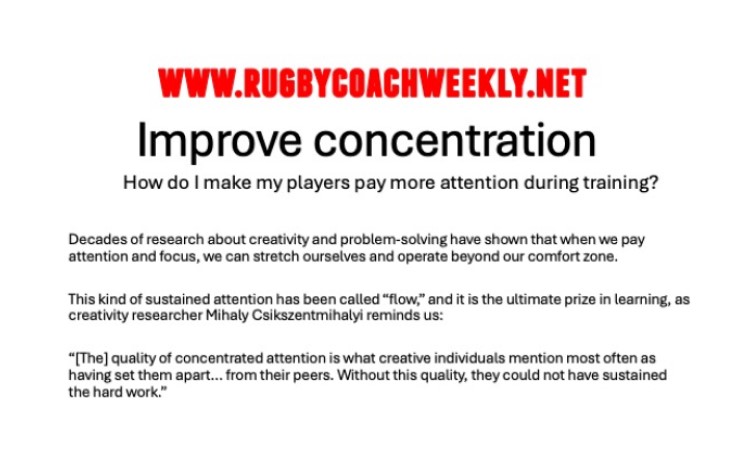You are viewing
1 of your 2 free articles
Lockdown planning: Preventing quick ruck ball sessions
If you are able to train, then you will be aiming to improve your players’ skills and tactical appreciation around specific areas of the game.
If you are in lockdown, it’s a chance to hone your session planning in readiness for your return.
 In Lockdown planning: Quick ruck ball sessions, we focused on applying pressure on the defence. Now, let's plan for the other side of the ball. France's defence coach, Shaun Edwards says that it is his main metric for success: slowing down ruck possession.
In Lockdown planning: Quick ruck ball sessions, we focused on applying pressure on the defence. Now, let's plan for the other side of the ball. France's defence coach, Shaun Edwards says that it is his main metric for success: slowing down ruck possession.
To enhance learning, you are better off focusing on an “arc” of learning for a specific area. This means spreading out the training over a number of weeks, rather than dedicating one session to this.
Here’s a four-week plan for preventing quick ball from rucks, but you can split this up into more sections if you want.
Objective: Apply pressure on the attack to make a mistake or kick the ball by preventing quick recycling of the ball from the tackle.
Week one: Tackle technique - tackling in pairs
Week two: Counter rucking
Week three: Defensive organisation around the ruck
Week four: Reorganising ruck defence
Let’s say you dedicate 15 minutes each week to the activities and assuming you have warmed up before the start of contact, you could use a mix of games and drills.
Each session may include all of the skills from all of the weeks. However, each week focuses on the specific skill, the reasons why it is important and how the players could improve their own contributions.
The mix depends on the skills of your players. Here are four ideas to help.
If you are in lockdown, it’s a chance to hone your session planning in readiness for your return.
 In Lockdown planning: Quick ruck ball sessions, we focused on applying pressure on the defence. Now, let's plan for the other side of the ball. France's defence coach, Shaun Edwards says that it is his main metric for success: slowing down ruck possession.
In Lockdown planning: Quick ruck ball sessions, we focused on applying pressure on the defence. Now, let's plan for the other side of the ball. France's defence coach, Shaun Edwards says that it is his main metric for success: slowing down ruck possession.To enhance learning, you are better off focusing on an “arc” of learning for a specific area. This means spreading out the training over a number of weeks, rather than dedicating one session to this.
Here’s a four-week plan for preventing quick ball from rucks, but you can split this up into more sections if you want.
Objective: Apply pressure on the attack to make a mistake or kick the ball by preventing quick recycling of the ball from the tackle.
Week one: Tackle technique - tackling in pairs
Week two: Counter rucking
Week three: Defensive organisation around the ruck
Week four: Reorganising ruck defence
Let’s say you dedicate 15 minutes each week to the activities and assuming you have warmed up before the start of contact, you could use a mix of games and drills.
Each session may include all of the skills from all of the weeks. However, each week focuses on the specific skill, the reasons why it is important and how the players could improve their own contributions.
The mix depends on the skills of your players. Here are four ideas to help.
Newsletter Sign Up
Coaches Testimonials

Gerald Kearney, Downtown Las Vegas Soccer Club

Paul Butler, Florida, USA

Rick Shields, Springboro, USA

Tony Green, Pierrefonds Titans, Quebec, Canada
Subscribe Today
Be a more effective, more successful rugby coach
In a recent survey 89% of subscribers said Rugby Coach Weekly makes them more confident, 91% said Rugby Coach Weekly makes them a more effective coach and 93% said Rugby Coach Weekly makes them more inspired.
Get Weekly Inspiration
All the latest techniques and approaches
Rugby Coach Weekly offers proven and easy to use rugby drills, coaching sessions, practice plans, small-sided games, warm-ups, training tips and advice.
We've been at the cutting edge of rugby coaching since we launched in 2005, creating resources for the grassroots youth coach, following best practice from around the world and insights from the professional game.
More from us
© 2023 Rugby Coach Weekly
Part of Green Star Media Ltd. Company number: 3008779
We use cookies so we can provide you with the best online experience. By continuing to browse this site you are agreeing to our use of cookies. Click on the banner to find out more.

